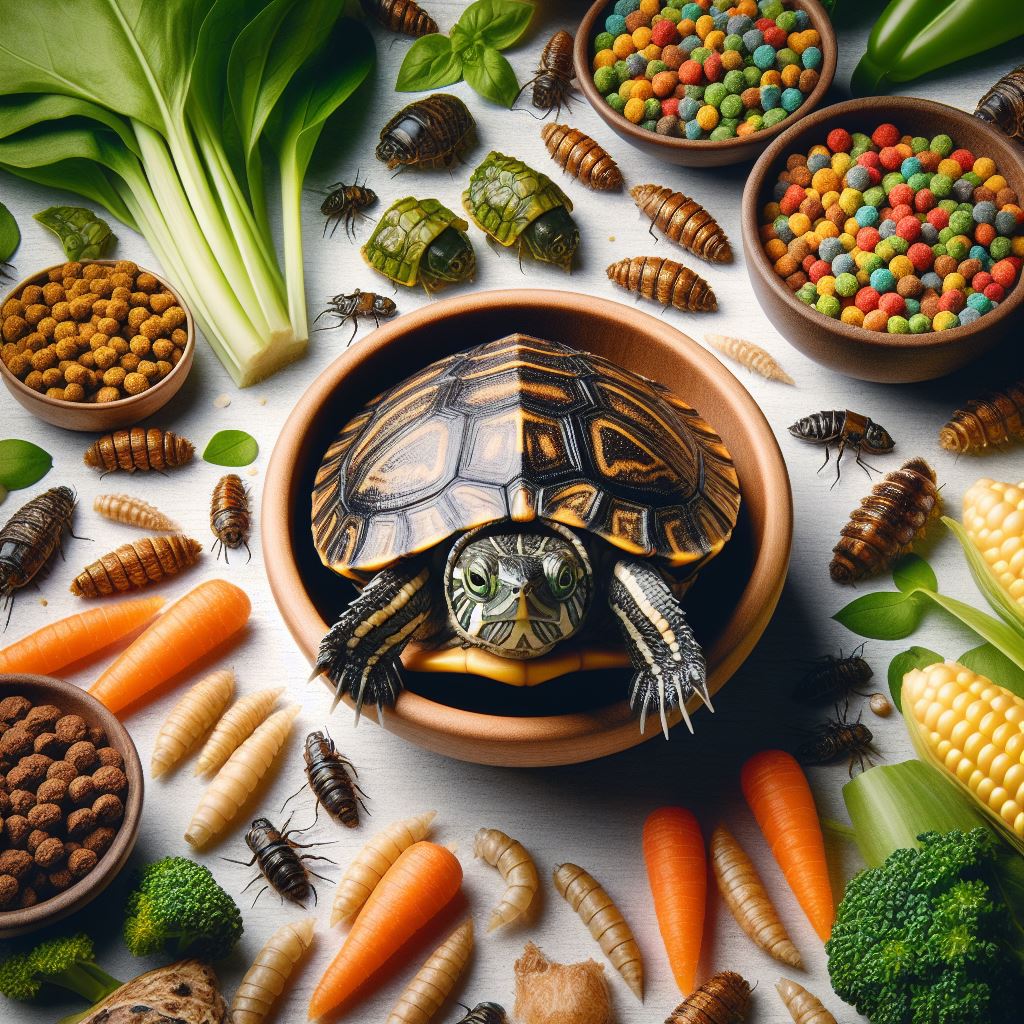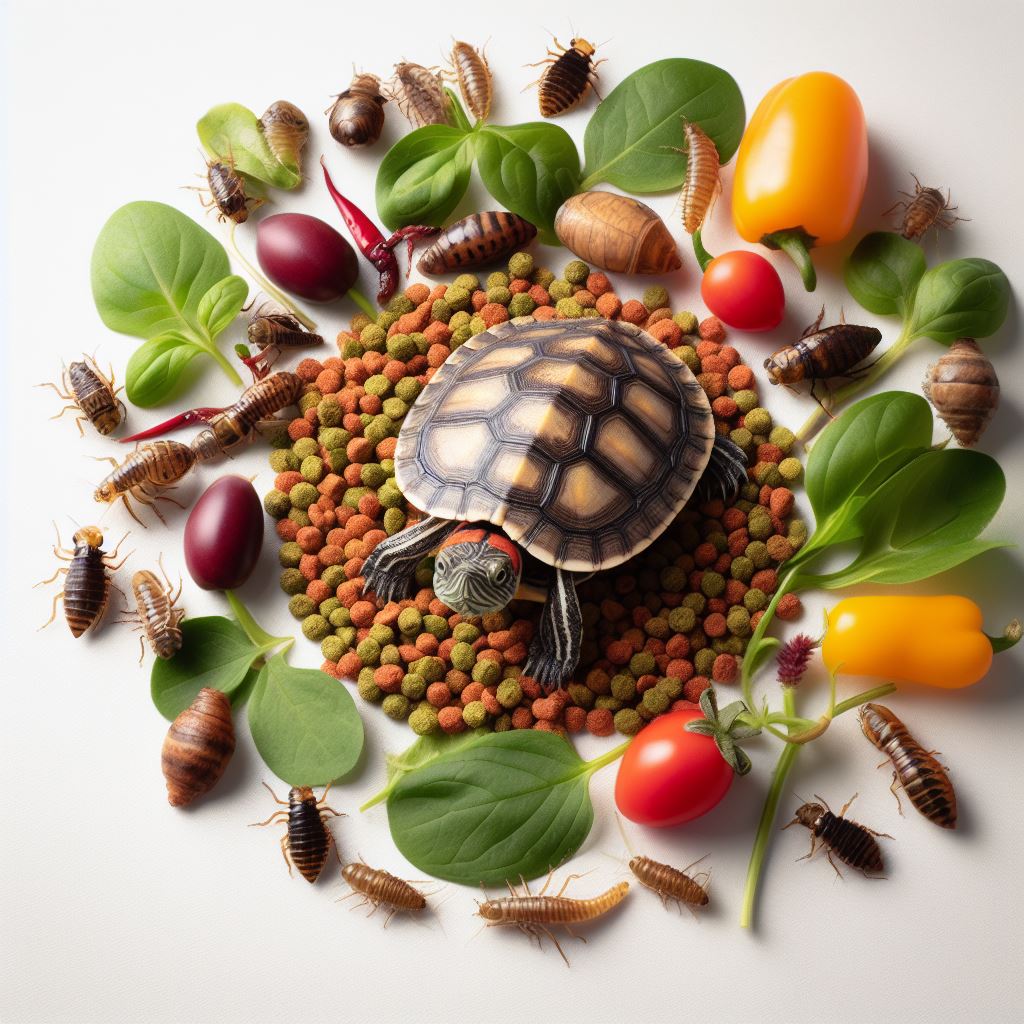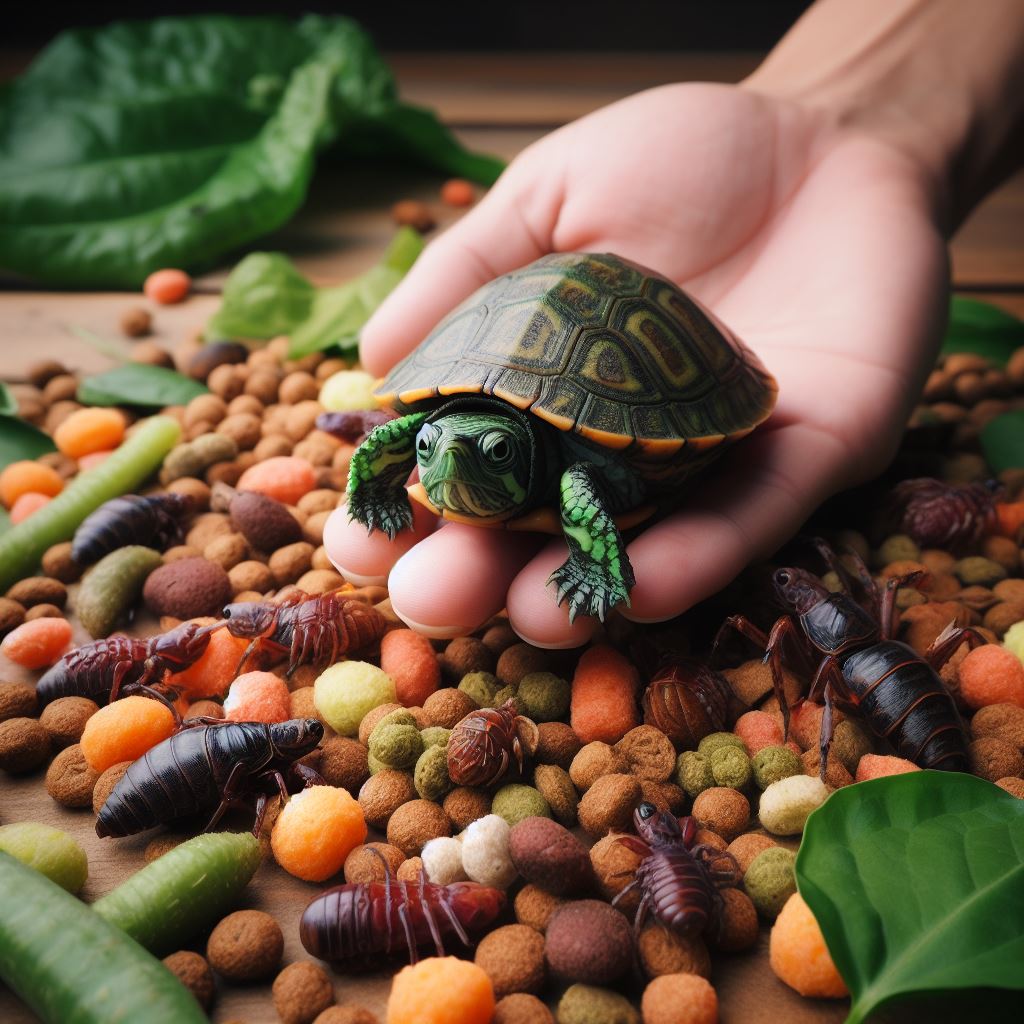To feed a baby map turtle, provide a balanced diet of commercially available turtle food and live or frozen foods like insects and small fish. Baby map turtles require a varied diet to meet their nutritional needs and should be fed small amounts multiple times a day.
Ensure that the food is appropriate for their size and offer calcium supplements to support the development of their shells. Additionally, monitor their feeding habits and adjust the diet accordingly to maintain their health and growth. Raising a baby map turtle can be a rewarding experience, but ensuring their proper nutrition is vital for their overall health and development.
These little reptiles have unique dietary requirements, and providing the right food in the right amounts is crucial. We will guide you on how to feed a baby map turtle, including what foods to offer, feeding frequency, and the importance of a balanced diet. By understanding their nutritional needs, you can ensure that your baby map turtle thrives and grows into a healthy adult.

Feeding Habits Of Baby Map Turtles
Baby map turtles have specific dietary preferences, so understanding their natural feeding habits is essential. By replicating their natural diet in captivity, you ensure their health and well-being. These tiny turtles typically feed on small insects, fish, and aquatic plants in the wild.
In captivity, you can offer them a balanced diet consisting of commercially available turtle pellets, live or frozen insects, and leafy greens. It’s crucial to provide them with a variety of food options to meet their nutritional needs. Additionally, calcium and vitamin supplements should be added to their diet to promote strong shell and overall growth.
Regularly monitor and adjust their diet as they grow, ensuring their food size is appropriate for their age. Providing a proper diet is key to keeping baby map turtles happy and thriving.
Key Nutritional Requirements For Baby Map Turtles
Feeding baby map turtles requires providing a well-balanced diet for their proper growth and development. These little creatures have key nutritional requirements that must be met. One essential nutrient is calcium, which helps maintain healthy shells and bones. To ensure they receive enough calcium, you can offer calcium supplements.
Additionally, baby map turtles need vitamin supplements to support their overall health.

Recommended Foods To Feed a Baby Map Turtle
Feeding a baby map turtle involves offering a range of foods to ensure proper nutrition. These include live insects and aquatic plants, which are essential parts of their diet. Additionally, it is advisable to incorporate commercial turtle pellets as a staple food source.
By providing a diverse selection of food options, you can meet the nutritional needs of the baby map turtle and promote its healthy growth.
Establishing A Feeding Routine For Baby Map Turtles
Feeding a baby map turtle requires establishing a routine that emphasizes consistency and regularity. To ensure proper nutrition, develop a feeding schedule based on the turtle’s age and size. Take into account their dietary preferences and habits. Avoid overused phrases and repetitive terms to maintain reader interest.
Craft short and concise sentences, no more than 20 words each, while maintaining an active voice. Strive for a unique and plagiarism-free writing style that is easy to understand. Lastly, omit a conclusion paragraph, as it is not necessary. Remember to write naturally, like a human, while incorporating relevant seo practices.
Monitoring Baby Map Turtle’s Feeding Habits
When feeding a baby map turtle, it’s important to monitor their appetite and make adjustments accordingly. Pay attention to the quantity of food and ensure it is appropriate for their size. Keep an eye out for any signs of malnutrition or overfeeding, as both can have negative effects on their health.
By observing their feeding habits closely, you can ensure that your baby map turtle is receiving the proper nutrition it needs to thrive. Remember to provide a variety of food options to meet their dietary requirements.
Feeding Techniques For Baby Map Turtles
Feeding a baby map turtle requires special techniques to ensure its proper nutrition. One tip is to encourage natural feeding behavior and activity through various strategies. Another important consideration is maintaining the optimal temperature for feeding conditions.
Remember to provide a varied diet and monitor the turtle’s behavior and appetite to ensure it is getting enough food. Taking care of a baby map turtle’s feeding needs is crucial for its overall well-being.
Common Feeding Problems And Solutions
Feeding a baby map turtle can be a challenging task for pet owners. Common feeding problems and solutions must be addressed. Enticing picky eaters and stimulating their appetite can be done with various techniques. Adjustments to the feeding regimen should be made for turtles with digestion issues.
These adjustments can help improve the turtle’s overall health. By following these guidelines, you can ensure that your baby map turtle gets the right nutrition it needs to thrive. Feeding a baby map turtle can be a rewarding experience when done correctly and with care.
So, let’s dive into the world of feeding these adorable creatures and ensure their well-being.
Dealing With Nutritional Deficiencies In Baby Map Turtles
Feeding a baby map turtle requires attention to avoid nutritional deficiencies. These deficiencies can negatively affect the turtle’s growth and overall health. It is important to recognize the symptoms of such deficiencies, including weakness, soft shell, and stunted growth. To rectify imbalanced diets, one can employ various techniques and solutions such as providing a balanced diet, incorporating proper calcium and vitamin supplements, and ensuring access to clean and fresh water.
However, in severe cases, it is advisable to seek professional advice from a veterinarian experienced in reptile care.

Overfeeding And Obesity Concerns In Baby Map Turtles
Feeding baby map turtles requires caution to prevent overfeeding and obesity. It is essential to understand the risks associated with overfeeding these turtles. To prevent obesity and maintain a healthy weight, follow these guidelines. First, carefully control the amount of food you provide.
Second, encourage exercise by allowing the turtle to explore its environment. Third, consider alternative feeding strategies, such as providing a variety of nutritious foods.
Conclusion
Feeding a baby map turtle requires careful attention to their natural diet, proper nutrition, and feeding schedule. Ensuring a balanced diet is crucial for their growth and development. Remember to offer a variety of foods, such as live or frozen insects, small fish, and aquatic plants.
Observe their behavior and adjust the feeding schedule accordingly. Consistency is key, but also be mindful of their individual needs and adjust portion sizes as they grow. It is important to maintain their health by ensuring their food is free from contaminants and providing a clean environment for them to thrive.
By following these guidelines and monitoring their health, you can provide the best nutrition and care for your baby map turtle, ensuring their long-term well-being and happiness.





Leave a Reply